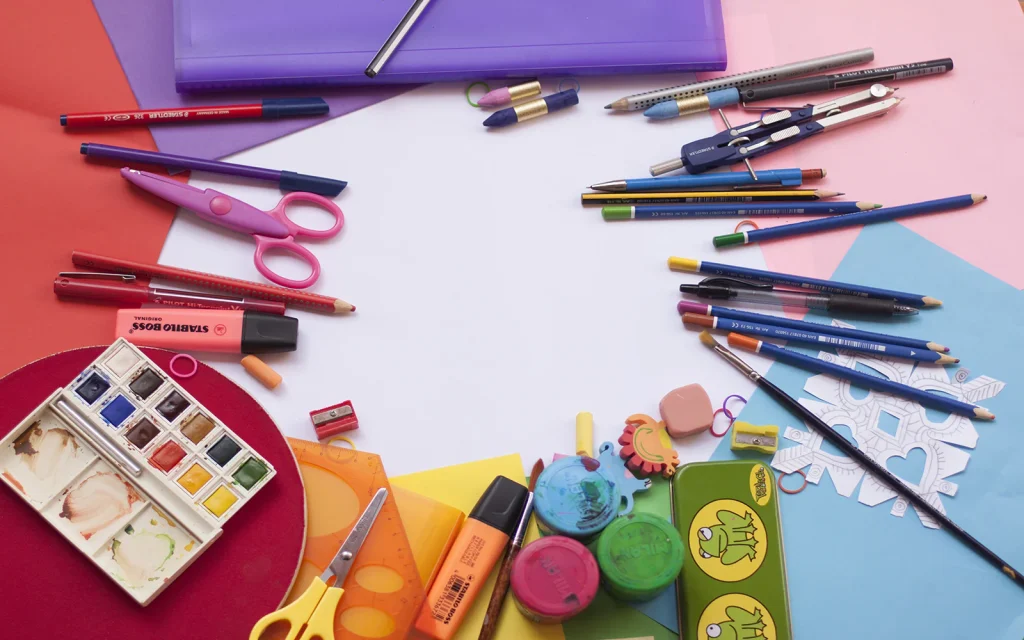Art education is a vital part of a well-rounded curriculum that nurtures creativity, self-expression, critical thinking, and cultural awareness. Through visual arts, music, drama, and design, students explore their imagination, develop problem-solving skills, and learn to communicate ideas in unique and powerful ways. In today’s fast-paced, tech-driven world, fostering creativity through art is more important than ever—not only for artistic development but also for emotional intelligence, innovation, and lifelong learning.
In this article, we’ll explore the importance of art education, its benefits, essential components of a strong art program, and how it shapes students into more thoughtful, expressive individuals.
🎨 Why Art Education Matters

Art is more than just paint on a canvas or notes in a melody—it’s a universal language that allows people to interpret the world and share their perspectives. For students, art education helps bridge the gap between academic subjects and emotional development, offering a space for self-discovery and personal growth.
✅ 1. Encourages Creative Thinking
Art encourages students to think outside the box, explore ideas freely, and take creative risks. Unlike subjects with one right answer, art allows for open-ended exploration, fostering original thought and innovation.
✅ 2. Builds Confidence and Self-Expression
Creating art helps students express emotions, beliefs, and experiences that might be hard to put into words. Through visual or performing arts, students build confidence by sharing their voice and developing a sense of identity.
✅ 3. Enhances Academic Performance
Research shows that students who engage in arts education often perform better in subjects like math and reading. Art sharpens observation, concentration, and analytical skills—abilities that support overall academic achievement.
✅ 4. Develops Fine Motor and Problem-Solving Skills
From holding a paintbrush to sculpting with clay, art enhances fine motor skills and hand-eye coordination. It also encourages strategic thinking and the ability to find creative solutions to challenges.
✅ 5. Promotes Cultural Awareness
Art education introduces students to diverse cultures, histories, and traditions. By studying global art forms, students learn empathy and gain a deeper understanding of the world’s rich cultural heritage.
🖌️ Key Components of a Strong Art Education Program
A well-rounded art education program goes beyond basic crafts or music lessons. It integrates practical skills, creative exploration, and art appreciation to develop a lifelong connection with the arts.
🎨 1. Visual Arts
Includes drawing, painting, sculpture, collage, printmaking, and digital art. Visual arts teach students about elements like color, line, form, and texture, while also encouraging personal expression.
🎭 2. Performing Arts
Drama, theater, dance, and music fall under performing arts. These disciplines build communication skills, confidence, and emotional intelligence.
🎼 3. Art History and Appreciation
Learning about famous artists, art movements, and cultural art practices helps students connect with the broader world. It also deepens their understanding of context, symbolism, and storytelling in art.
🖥️ 4. Integration of Technology
Modern art education incorporates digital tools like graphic design software, animation, and digital photography, helping students adapt to creative industries of the future.
🧠 5. Cross-Curricular Connections
Art can complement subjects like history, literature, and science. For example, students might illustrate historical events, design science posters, or create visual narratives based on literary themes.
👩🎨 Benefits of Art Education by Age Group
🧒 Elementary School
- Develops motor skills and hand-eye coordination
- Introduces basic elements of art and creativity
- Builds foundational self-expression and confidence
🧑 Middle School
- Explores deeper artistic techniques and mediums
- Encourages identity development and personal themes
- Enhances collaboration through group projects
🧑🎓 High School
- Refines skills for portfolio building or college preparation
- Offers opportunities for advanced study (AP Art, Drama, Music)
- Fosters critical thinking, feedback processing, and artistic critique
🧩 Challenges in Art Education—and Solutions
Despite its benefits, art education often faces challenges, especially in underfunded schools or standardized-focused systems.
❌ Challenge: Limited Funding and Resources
Arts programs are often the first to face cuts during budget reductions.
Solution: Schools can partner with local artists, galleries, and organizations to bring affordable art opportunities and supplies into classrooms.
❌ Challenge: Undervaluing the Arts
The arts are sometimes seen as non-essential compared to core academic subjects.
Solution: Educators and advocates should highlight the cross-disciplinary benefits of art and share success stories that show how creativity boosts student outcomes.
❌ Challenge: Unequal Access
Not all students have the same access to quality art education.
Solution: Equity-based funding and community-driven arts initiatives can help bridge this gap and ensure every child has a chance to explore their creativity.
🌟 How to Support Art Education
Whether you’re a parent, teacher, or policymaker, there are many ways to support and promote art education:
- Encourage Creativity at Home: Provide art supplies and creative spaces.
- Attend Student Art Exhibits and Performances: Show support for student artists.
- Advocate for Arts Funding: Vote for policies and leaders that prioritize arts in schools.
- Incorporate Art into Learning: Use art projects in subjects like science, history, and language arts.
- Celebrate Art Careers: Expose students to paths in design, animation, architecture, and the performing arts.
✏️ Art Education in the Real World
Art education isn’t just for aspiring painters or musicians—it prepares students for a variety of real-world careers and challenges:
- Creative Industries: Graphic design, fashion, film, music, and advertising
- STEM Fields: Engineering and architecture benefit from design thinking
- Therapeutic Professions: Art therapy uses creativity to promote healing
- Entrepreneurship: Innovative thinking and branding are fueled by creativity
🎨 Conclusion
Art education cultivates more than artistic talent—it develops well-rounded individuals who are imaginative, empathetic, and expressive. By giving students the tools to create, interpret, and appreciate art, we empower them to better understand themselves and the world around them.
In fostering creativity through art, we’re not only enriching education—we’re shaping the visionaries and problem-solvers of tomorrow. Let’s ensure art remains a core part of every student’s learning journey. 🎭🎨📚
Discover delicious recipes, helpful tips, and everyday inspiration. Visit Blessed Beyond Words for food ideas and practical life insights! – https://blessedbeyondwords.com


